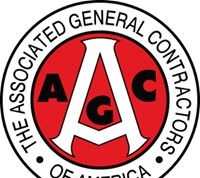U.S. EPA’s ENERGY STAR Program Develops Energy-Saving Guidance for Co-Location Data Centers in Collaboration with Equinix and Iron Mountain
WASHINGTON – RealEstateRama – The U.S. Environmental Protection Agency (EPA) announced the release of a new best practices guide to help customers of shared data centers, also known as co-locations, save energy and reduce their carbon footprint. Developed with input from global data centers, Equinix and Iron Mountain, EPA created this guidance to address common issues like energy waste and unnecessary operational costs.
“Data centers are central to meeting our ever-growing need for data processing and storage,” said EPA Administrator Michael S. Regan. “Prioritizing energy efficiency in these data centers will allow our economy to expand to meet these needs while reducing the greenhouse gas emissions associated with them.”
Critical to society and the digital economy, co-location data centers are large data centers that rent out space within their facilities to third parties to store their servers and network equipment. This service is popular among businesses that may not have the capacity or resources to manage their own private data center but still require secure facilities for storing, processing, and protecting their data. Moreover, co-location data centers provide services that are more efficient than businesses operating their own data center.
In 2018, data centers were estimated to consume about 1% of all global energy – and despite the success of data center efficiency over the past decade, the pace of digitalization and energy consumption has been increasing, and more businesses are needing to rent space to store their data. Many quick and easy efficiency improvements – such as replacing old, inefficient hardware – have been achieved, and data center managers are now looking to improve setup and infrastructure, which accounts for roughly 38% of data center energy consumption, to optimize efficiency. This new guidance on best practices was developed to make those improvements by addressing such issues as:
- Airflow management, which can reduce energy use by 15% when setup is optimized for adequate air flow.
- Optimal operating temperature, which can reduce cooling costs by 4% for every degree that the air inlet temperature is raised.
- Proper cabling, which can improve airflow, reduce stress on IT equipment and ensure that debris and inhibited airflow does not reduce the lifespan of hardware.
- Separation of hot and cold aisles, which can reduce energy consumption by 10-35% depending on setup.
- Server efficiency, which has continued to improve with the recent release of a new ENERGY STAR server specification. The latest requirements expanded the program scope to include storage-heavy servers and include criteria levels three times more stringent than what was included previously. The new ENERGY STAR specification was developed in close collaboration with industry allies to further push the bar on efficiency for server products – with the result that servers are expected to perform 38% more efficiently than standard models in order to earn the label.
You can find this guidance on best practices for co-location data centers on the ENERGY STAR website, and find more guidance on data center efficiency at ENERGY STAR’s Data Centers page.
About ENERGY STAR
ENERGY STAR® is the government-backed symbol for energy efficiency, providing simple, credible, and unbiased information that consumers and businesses rely on to make well-informed decisions. Thousands of industrial, commercial, utility, state, and local organizations rely on their partnership with EPA to deliver cost-saving energy efficiency solutions. Since 1992, ENERGY STAR and its partners helped American families and businesses avoid more than $500 billion in energy costs and achieve more than 4 billion metric tons of greenhouse gas reductions. More background information about ENERGY STAR’s impacts.
Contact Us to ask a question, provide feedback, or report a problem.
Contact Information
EPA Press Office













